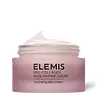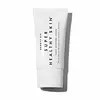What's inside
What's inside
 Key Ingredients
Key Ingredients

 Benefits
Benefits

 Concerns
Concerns

 Ingredients Side-by-side
Ingredients Side-by-side

Water
Skin ConditioningGlycerin
HumectantCaprylic/Capric Triglyceride
MaskingGlyceryl Stearate Se
EmulsifyingIsononyl Isononanoate
EmollientDicaprylyl Carbonate
EmollientDimethicone
EmollientPhenoxyethanol
PreservativePolyacrylate-13
Cetyl Alcohol
EmollientStearic Acid
CleansingTocopheryl Acetate
AntioxidantCoco-Caprylate
EmollientRosa Hybrid Flower Water
MaskingXanthan Gum
EmulsifyingPolyisobutene
Bentonite
AbsorbentParfum
MaskingTocopherol
AntioxidantCitric Acid
BufferingButyrospermum Parkii Butter
Skin ConditioningChlorphenesin
AntimicrobialTriticum Vulgare Germ Oil
EmollientChlorella Vulgaris Extract
Skin ConditioningGlyceryl Polyacrylate
Daucus Carota Sativa Root Extract
Skin ConditioningGlyceryl Acrylate/Acrylic Acid Copolymer
HumectantDisodium EDTA
Padina Pavonica Thallus Extract
Skin ConditioningSodium Dehydroacetate
PreservativePolysorbate 20
EmulsifyingSorbitan Isostearate
EmulsifyingCitronellol
PerfumingGeraniol
PerfumingGinkgo Biloba Leaf Extract
Skin ConditioningPorphyridium Cruentum Extract
Skin ConditioningCollagen Amino Acids
MoisturisingBenzyl Salicylate
PerfumingSodium Benzoate
MaskingPotassium Sorbate
PreservativeLeuconostoc/Radish Root Ferment Filtrate
AntimicrobialPelargonium Graveolens Oil
MaskingRosa Damascena Flower Oil
MaskingRosa Damascena Extract
MaskingWater, Glycerin, Caprylic/Capric Triglyceride, Glyceryl Stearate Se, Isononyl Isononanoate, Dicaprylyl Carbonate, Dimethicone, Phenoxyethanol, Polyacrylate-13, Cetyl Alcohol, Stearic Acid, Tocopheryl Acetate, Coco-Caprylate, Rosa Hybrid Flower Water, Xanthan Gum, Polyisobutene, Bentonite, Parfum, Tocopherol, Citric Acid, Butyrospermum Parkii Butter, Chlorphenesin, Triticum Vulgare Germ Oil, Chlorella Vulgaris Extract, Glyceryl Polyacrylate, Daucus Carota Sativa Root Extract, Glyceryl Acrylate/Acrylic Acid Copolymer, Disodium EDTA, Padina Pavonica Thallus Extract, Sodium Dehydroacetate, Polysorbate 20, Sorbitan Isostearate, Citronellol, Geraniol, Ginkgo Biloba Leaf Extract, Porphyridium Cruentum Extract, Collagen Amino Acids, Benzyl Salicylate, Sodium Benzoate, Potassium Sorbate, Leuconostoc/Radish Root Ferment Filtrate, Pelargonium Graveolens Oil, Rosa Damascena Flower Oil, Rosa Damascena Extract
Water
Skin ConditioningDimethicone
EmollientButylene Glycol
HumectantGlycerin
HumectantRicinus Communis Seed Oil
MaskingCaprylic/Capric Triglyceride
MaskingDipentaerythrityl Hexacaprylate/Hexacaprate
EmulsifyingDimethicone/Vinyl Dimethicone Crosspolymer
Skin ConditioningCetyl Alcohol
EmollientHydroxyethyl Acrylate/Sodium Acryloyldimethyl Taurate Copolymer
Emulsion StabilisingLauroyl Lysine
Skin ConditioningPhenoxyethanol
PreservativeSqualane
EmollientSaccharide Isomerate
HumectantButyrospermum Parkii Butter
Skin ConditioningPotassium Cetyl Phosphate
EmulsifyingAcrylates/C10-30 Alkyl Acrylate Crosspolymer
Emulsion StabilisingEthylhexylglycerin
Skin ConditioningPhysalis Angulata Extract
Skin ProtectingChlorphenesin
AntimicrobialPolysorbate 20
EmulsifyingPolysorbate 60
EmulsifyingSodium Hydroxide
BufferingDisodium EDTA
Sorbitan Isostearate
EmulsifyingCitric Acid
BufferingSodium Hyaluronate
HumectantSodium Citrate
BufferingTocopherol
AntioxidantCalendula Officinalis Flower Extract
MaskingDaphne Odora Callus Extract
Skin ProtectingAcetyl Tetrapeptide-2
Skin ConditioningDextran
Water, Dimethicone, Butylene Glycol, Glycerin, Ricinus Communis Seed Oil, Caprylic/Capric Triglyceride, Dipentaerythrityl Hexacaprylate/Hexacaprate, Dimethicone/Vinyl Dimethicone Crosspolymer, Cetyl Alcohol, Hydroxyethyl Acrylate/Sodium Acryloyldimethyl Taurate Copolymer, Lauroyl Lysine, Phenoxyethanol, Squalane, Saccharide Isomerate, Butyrospermum Parkii Butter, Potassium Cetyl Phosphate, Acrylates/C10-30 Alkyl Acrylate Crosspolymer, Ethylhexylglycerin, Physalis Angulata Extract, Chlorphenesin, Polysorbate 20, Polysorbate 60, Sodium Hydroxide, Disodium EDTA, Sorbitan Isostearate, Citric Acid, Sodium Hyaluronate, Sodium Citrate, Tocopherol, Calendula Officinalis Flower Extract, Daphne Odora Callus Extract, Acetyl Tetrapeptide-2, Dextran
Ingredients Explained
These ingredients are found in both products.
Ingredients higher up in an ingredient list are typically present in a larger amount.
This ingredient is also known as shea butter. It is an effective skin hydrator and emollient.
Emollients help soothe and soften your skin. It does this by creating a protective film on your skin. This barrier helps trap moisture and keeps your skin hydrated. Emollients may be effective at treating dry or itchy skin.
Shea butter is rich in antioxidants. Antioxidants help fight free-radicals, or molecules that may harm the body. It is also full of fatty acids including stearic acid and linoleic acid. These acids help replenish the skin and keep skin moisturized.
While Shea Butter has an SPF rating of about 3-4, it is not a sunscreen replacement.
Shea butter may not be fungal acne safe. We recommend speaking with a professional if you have any concerns.
Learn more about Butyrospermum Parkii ButterThis ingredient is an emollient, solvent, and texture enhancer. It is considered a skin-softener by helping the skin prevent moisture loss.
It helps thicken a product's formula and makes it easier to spread by dissolving clumping compounds.
Caprylic Triglyceride is made by combining glycerin with coconut oil, forming a clear liquid.
While there is an assumption Caprylic Triglyceride can clog pores due to it being derived from coconut oil, there is no research supporting this.
Learn more about Caprylic/Capric TriglycerideCetyl Alcohol is a fatty alcohol. Fatty Alcohols are most often used as an emollient or to thicken a product.
Its main roles are:
Though it has "alcohol" in the name, it is not related to denatured alcohol or ethyl alcohol.
The FDA allows products labeled "alcohol-free" to have fatty alcohols.
Learn more about Cetyl AlcoholChlorphenesin is a synthetic preservative. It helps protect a product against bacteria in order to extend shelf life. In most cases, Chlorphenesin is paired with other preservatives such as phenoxyethanol and caprylyl glycol.
Chlorphenesin is a biocide. This means it is able to help fight the microorganisms on our skin. It is also able to fight odor-releasing bacteria.
Chlorphenesin is soluble in both water and glycerin.
Studies show Chlorphenesin is easily absorbed by our skin. You should speak with a skincare professional if you have concerns about using Chlorphenesin.
Learn more about ChlorphenesinCitric Acid is an alpha hydroxy acid (AHA) naturally found in citrus fruits like oranges, lemons, and limes.
Like other AHAs, citric acid can exfoliate skin by breaking down the bonds that hold dead skin cells together. This helps reveal smoother and brighter skin underneath.
However, this exfoliating effect only happens at high concentrations (20%) which can be hard to find in cosmetic products.
Due to this, citric acid is usually included in small amounts as a pH adjuster. This helps keep products slightly more acidic and compatible with skin's natural pH.
In skincare formulas, citric acid can:
While it can provide some skin benefits, research shows lactic acid and glycolic acid are generally more effective and less irritating exfoliants.
Most citric acid used in skincare today is made by fermenting sugars (usually from molasses). This synthetic version is identical to the natural citrus form but easier to stabilize and use in formulations.
Read more about some other popular AHA's here:
Learn more about Citric AcidDimethicone is a type of synthetic silicone created from natural materials such as quartz.
What it does:
Dimethicone comes in different viscosities:
Depending on the viscosity, dimethicone has different properties.
Ingredients lists don't always show which type is used, so we recommend reaching out to the brand if you have questions about the viscosity.
This ingredient is unlikely to cause irritation because it does not get absorbed into skin. However, people with silicone allergies should be careful about using this ingredient.
Note: Dimethicone may contribute to pilling. This is because it is not oil or water soluble, so pilling may occur when layered with products. When mixed with heavy oils in a formula, the outcome is also quite greasy.
Learn more about DimethiconeDisodium EDTA plays a role in making products more stable by aiding other preservatives.
It is a chelating agent, meaning it neutralizes metal ions that may be found in a product.
Disodium EDTA is a salt of edetic acid and is found to be safe in cosmetic ingredients.
Learn more about Disodium EDTAGlycerin is already naturally found in your skin. It helps moisturize and protect your skin.
A study from 2016 found glycerin to be more effective as a humectant than AHAs and hyaluronic acid.
As a humectant, it helps the skin stay hydrated by pulling moisture to your skin. The low molecular weight of glycerin allows it to pull moisture into the deeper layers of your skin.
Hydrated skin improves your skin barrier; Your skin barrier helps protect against irritants and bacteria.
Glycerin has also been found to have antimicrobial and antiviral properties. Due to these properties, glycerin is often used in wound and burn treatments.
In cosmetics, glycerin is usually derived from plants such as soybean or palm. However, it can also be sourced from animals, such as tallow or animal fat.
This ingredient is organic, colorless, odorless, and non-toxic.
Glycerin is the name for this ingredient in American English. British English uses Glycerol/Glycerine.
Learn more about GlycerinPhenoxyethanol is a preservative that has germicide, antimicrobial, and aromatic properties. Studies show that phenoxyethanol can prevent microbial growth. By itself, it has a scent that is similar to that of a rose.
It's often used in formulations along with Caprylyl Glycol to preserve the shelf life of products.
Polysorbate 20 is made by combining ethoxylation of sorbitan, ethylene oxide, and lauric acid. It is a mild cleansing agent, surfactant, and emulsifier.
As a surfactant, it helps collect dirt and oils for washing. Emulsifiers prevent oils and water from separating.
Polysorbate 20 also adds scent to a product. Since it is made using sorbitol, it has a sweet scent. Sorbitol can also be found in fruits such as apples and peaches.
The lauric acid used to create Polysorbate 20 is often derived from coconuts.
Polysorbate 20 may not be fungal acne safe.
Learn more about Polysorbate 20Sorbitan Isostearate is an emulsifer and cleaning agent. It is created from isostearic acid and sorbitol.
As an emulsifier, Sorbitan Isostearate prevents oils and water from separating.
Due to its isostearic acid base, it may not be safe for Malassezia or fungal acne.
Learn more about Sorbitan IsostearateTocopherol (also known as Vitamin E) is a common antioxidant used to help protect the skin from free-radicals and strengthen the skin barrier. It's also fat soluble - this means our skin is great at absorbing it.
Vitamin E also helps keep your natural skin lipids healthy. Your lipid skin barrier naturally consists of lipids, ceramides, and fatty acids. Vitamin E offers extra protection for your skin’s lipid barrier, keeping your skin healthy and nourished.
Another benefit is a bit of UV protection. Vitamin E helps reduce the damage caused by UVB rays. (It should not replace your sunscreen). Combining it with Vitamin C can decrease sunburned cells and hyperpigmentation after UV exposure.
You might have noticed Vitamin E + C often paired together. This is because it is great at stabilizing Vitamin C. Using the two together helps increase the effectiveness of both ingredients.
There are often claims that Vitamin E can reduce/prevent scarring, but these claims haven't been confirmed by scientific research.
Learn more about TocopherolWater. It's the most common cosmetic ingredient of all. You'll usually see it at the top of ingredient lists, meaning that it makes up the largest part of the product.
So why is it so popular? Water most often acts as a solvent - this means that it helps dissolve other ingredients into the formulation.
You'll also recognize water as that liquid we all need to stay alive. If you see this, drink a glass of water. Stay hydrated!
Learn more about Water